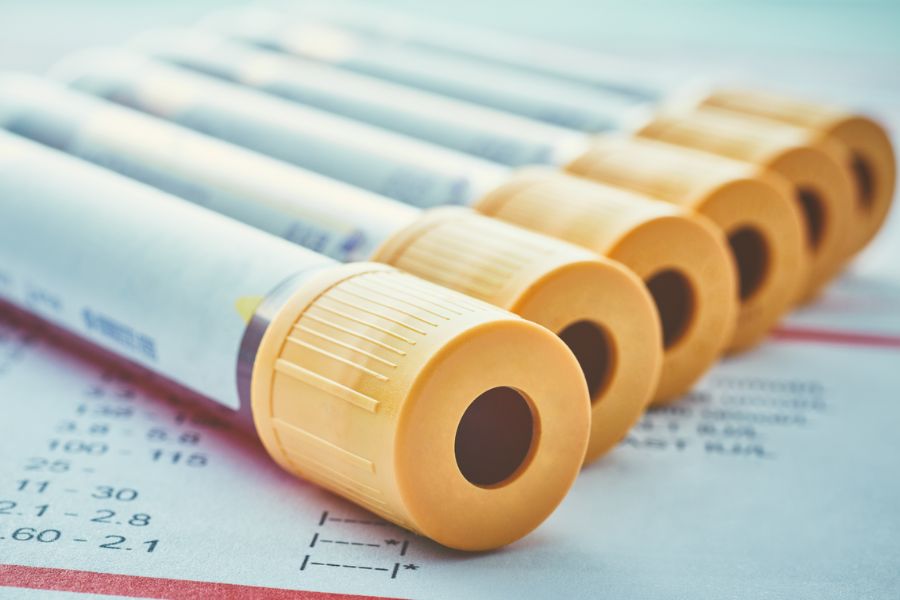seqcml-serum-index-proficiency-tests
SEQCML: First accredited as a provider of serum index proficiency tests

The Spanish Society of Laboratory Medicine (Sociedad Española de Medicina de Laboratorio, SEQCML) has recently obtained ENAC accreditation as a provider of serum index proficiency testing programs.
The company already had 8 accredited proficiency testing programs in biochemistry and this program is presented as an additional complement that enables the sample quality to be assessed, so it greatly impacts the quality and reliability of laboratory test results.
Dr. Andrea Caballero, president of the Extraanalytical Commission and member of the SEQCML Committee of External Quality Programs, and Dr. Berta Piqueras, Co-director and Head of Program Quality and member of the SEQCML Committee of External Quality Programs, explain accreditation’s guarantees for laboratories making use of this program.
What differentiates this program from the 10 accredited proficiency testing programs in biochemistry offered by SEQCML?
The presence of hemolysis (H), jaundice (J) and lipemia (L) in samples are a common and frequent interference in many medical laboratory tests. Therefore, most laboratories have already adopted the sample quality assessment before determining the analytes as part of their routine practice by determining the HJL indices, in addition to automating the visual inspection carried out in the past.
This measurement has to be stable and accurate over time, but most laboratories do not take checking the performance of the HJL measurement module into account. Serum indices do not usually appear in the results reports as such, but they condition the delivery of other tests. Therefore, they should be subject to control procedures in the same way as the rest of the laboratory tests, subject to internal quality controls and external quality assurance programs. In fact, proficiency testing programs are, in most cases, the only way for laboratories to control these index measurement functions, due to the lack of use and/or availability of internal quality controls.
What added value does taking part in this exercise bring to laboratories?
Taking part in accredited proficiency testing programs is essential for detecting possible errors or deviations from the usual behaviour of serum index measurement methods and consequently identifying areas for improving the laboratory to obtain reliable analytical results that enable a clinical diagnosis to be confirmed or ruled out, or a correct follow-up to be performed, which guarantees patient safety. It therefore helps participants to produce accurate and reproducible results and enables comparisons to be made between different suppliers’ performance.
The main objective of the accredited serum index program is to promote knowledge among participants that contributes to increasing their laboratories’ generated analytical result quality, controlling the sample quality and, therefore, the preanalytical phase. It also assesses both the participant's long-term imprecision and the systematic error between the different instrument groups.
In addition, as there are no quality specifications derived from the intended use and no known biological variation data, a quality specification for the total error is recommended based on the participants’ performance in the program: the 90th percentile of the percentage deviations obtained from the assigned value (the specific group's mean), of all the results of the laboratories, for each magnitude. These state-of-the-art specifications are dynamic and modifiable over time and allow laboratories to assess their performance.
Why are participants offered the possibility to contribute quantitative and semi-quantitative values?
There are currently no specific recommendations for HJL's measurement methodology, nor on how to report them or the standard units to use. Different organizations, including SEQCML, have proposed solutions to harmonize detecting and communicating the serum index results. However, for now, there is no consensus among providers on how to detect and report these indices, so the results can be expressed as quantitative (numerical result) or semi-quantitative (interval result).
It is not possible to take part in the program by simultaneously reporting quantitative and semi-quantitative results, so if a laboratory has both results, it must participate in the quantitative indices, where the laboratory result is directly assessed against the comparison average of the equivalent equipment and the performance is assessed against the group's dispersion data. Most in-vitro diagnostic (IVD) companies already offer quantitative indices, but there are two companies whose instruments only allow a range of values to be obtained. In any case, regardless of which analyzer is used, any laboratory may assess its performance for the 3 serum indices through the SEQCML proficiency testing program.
What value do you consider these accredited proficiency testing programs to contribute to diagnostic quality and the patient?
In most laboratories, serum indices are being used to not deliver the results of certain analytes or delivery with a comment indicating the deviation that the index may be causing. That is, they are used to make decisions that imply whether the results are available or not to the clinician. The action of not delivering a result can have serious consequences on patient management, since getting a new sample prolongs response times and, therefore, can delay diagnosis and/or treatment.
Serum indices are not only magnitudes used to assess sample quality but are increasingly used as magnitudes with their own clinical relevance: the hemolysis index as a marker of intravascular hemolysis, the jaundice index as a marker of serum bilirubin level and the turbidity index as a marker of the presence of a possible monoclonal component.
For all the above, it is important to assess their performance by participating in an accredited intercomparison program such as the SEQCML one.
Accreditation News
Accreditation News is published quarterly and sent to organizations and to people who have asked to be included on its mailing list.
Would you like to receive a free copy of Accreditation News? Subscribe here.

